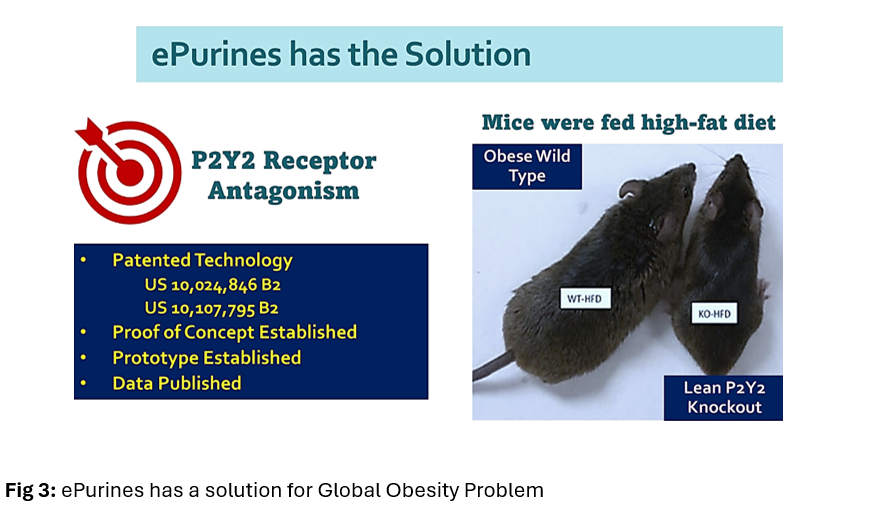
Reducing the Burden of Non-Communicable Diseases by Targeting Global Problem of Obesity Across all Economies
The Problem: Non-Communicable Diseases (NCDs) are a large group of chronic diseases which cannot be transmissible from person-to-person. NCDs progress slowly and last long, often with comorbid conditions, thus resulting in huge economic burden to nations. At present, globally NCDs account for 41 million deaths per year or about 71% of all deaths. It is expected to reach 52 million deaths per year by the year 2030. According to the World Health Organization (WHO), four NCDs, namely cardiovascular diseases, chronic respiratory diseases, cancers, and diabetes mellitus account for 82% of all NCD deaths. Other NCDs include chronic kidney disease, musculoskeletal diseases, mental health disorders, and eye and ear disorders. These also account significantly for the total burden of morbidity associated with NCDs. Although NCDs occur due to complex interactions among genetics, physiology, behavioral and environmental factors, currently the major driver of NCDs is increased prevalence of overweight or obesity globally. In fact, obesity is considered as the mother of all diseases (Figure 1)


Diet-Induced Obesity: Diet-induced obesity or consumption of extra calories through food and drinks than what one can spend, or burn is the major cause of overweight and obesity globally. With widespread availability of processed and refined foods packed with high carbohydrate or sugar content at an affordable price is fueling the global obesity epidemic. Although physicians and dieticians advocate healthy eating and lifestyle changes to prevent overweight and obesity, in reality, it is very hard for people to follow these in a world where tempting high calorie foods are available everywhere at a low price. Socioeconomic factors also prevent people eating healthy foods, which are more expensive. It is estimated that if 20% of obese people lose weight globally, several trillions of dollars will be saved in healthcare costs. So, obviously people need some help in terms of a safe medicine that can promote burning of the extra calories they consume and thus avoid overweight and obesity.
ePurines has a Solution for Global Problem of Diet-induced Obesity: The Founding Members of ePuriens discovered that when purinergic P2Y2 receptor is deleted genetically, mice do not become obese by feeding high-fat diet for 16 weeks as compared to the wild type mice with the P2Y2 receptor intact (Figure 3). This was not due to loss of appetite, as the gene knockout mice ate as much food as the wild type mice ate. Further deep cellular and molecular studies revealed that P2Y2 deletion prevents obesity by multiple mechanisms (Figure 4). This includes increase in whole body metabolism and thermogenesis due to browning of fat and thus impaired formation of fat tissue, with decreased inflammation. No other anti-obesity drug affects so many biological mechanisms of obesity.
Advantages of ePurines’ Approach for Global Obesity Problem Over the Currently Available Anti-Obesity Drugs: Currently popular GLP-1 receptor agonists (RA), which seem to be promising, have limited market, catering to the needs of obese people in the developed countries only, mostly the North America and rich Western European countries. They are expensive and injectable drugs which need refrigeration with short shelf-life; they are not covered for reimbursement of costs by many health insurance companies if prescribed for weight loss only. They also have several complications reported, from minor to severe ones.

The above facts make GLP-1 RA unsuitable for addressing global obesity pandemic, especially in the developing countries (Figure 5). In contrast to the GLP-1 RA, which can reach about 200 million target subjects only, the anti-obesity drugs of ePurines are targeted for the unmet market need of 1.8 billion subjects, with about 800 million in emerging markets and about 1 billion people in the developing countries.
ePurines’ Strategy to Address Global Obesity Epidemic: The products being develop by ePurines are orally effective small molecule drugs, devoid of serious side effects. They have longer shelf-life at room temperature and improved logistics and storage as compared to GLP-1 RA. ePurines’ anti-obesity drugs will be less expensive to manufacture and market and will be optimally priced for emerging markets and developing countries by simultaneous licensing for clinical trials and manufacture in Asia, Europe, and America (Figure 6).

Market for Anti-obesity Drugs: Figure 7 shows the projected growth of global anti-obesity market up to the year 2030. Projected

Fortune Business Magazine projected a CAGR of 26.1% from 2023 to 2030, reaching $22.85 billion. J.P. Morgan’s prediction is more optimistic, reaching $100 billion by 2030. The Atlantic also predicted a growth of the anti-obesity market to $90 billion. At that point, the anti-obesity drug market becomes like the pizza market, driven by demand (one billion slices sold per day) than by competition. The $55 billion pizza market has 10 large national chains, and 35,000 local outlets or joints, and is still expanding due to increased demand for pizzas. It is anticipated that may be the case with the anti-obesity drug market in the future, making it easy for entry into the market.
Projected Revenues from the Year 2028 to 2033 Based on Fortune Business Forecast:
Projected Revenues from the Year 2028 to 2033 Based on Fortune Business Forecast:

As shown in Figure 8, depending on capture of 1% or 3% market share, ePurines products are expected to generate huge revenues with projected ROI from 10x to 50x or even more.
Hedging & Exit Options: ePurines is hedged with a patented pipeline technology (Figure 9) and it has clear exit options (Figure 10), thus increasing the chances of successful outcome of commercialization.
Hedging & Exit Options: ePurines is hedged with a patented pipeline technology (Figure 9) and it has clear exit options (Figure 10), thus increasing the chances of successful outcome of commercialization.




Disclaimer: Projections made are not guaranteed assurances.


